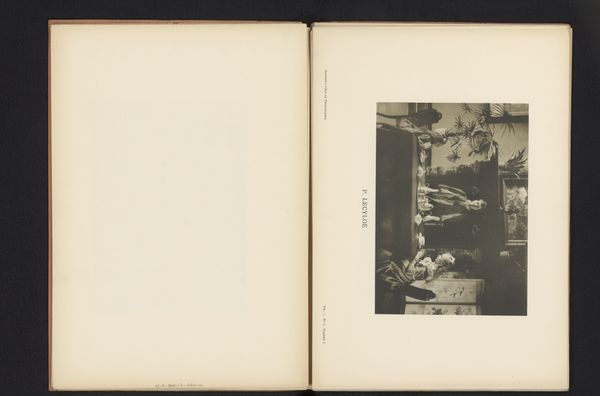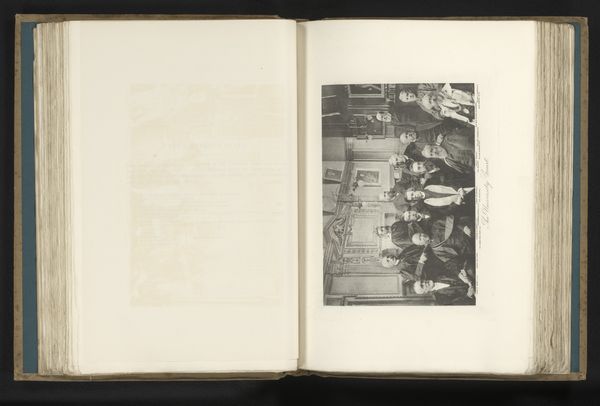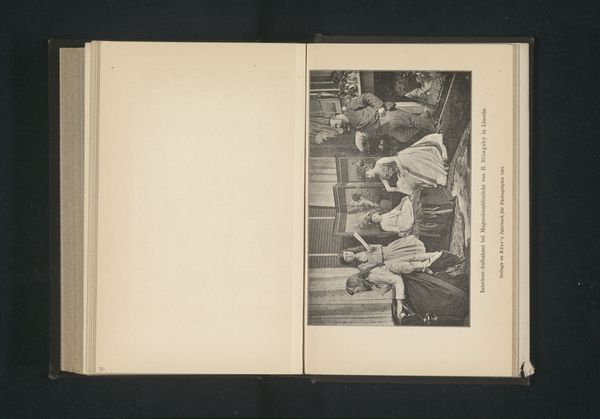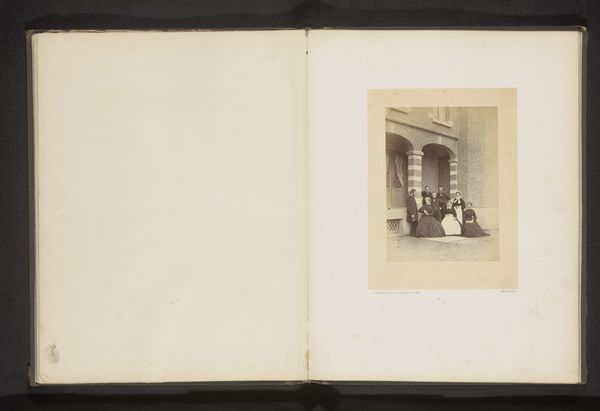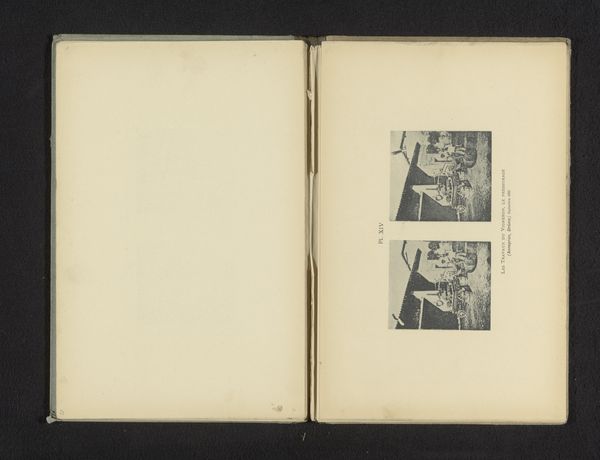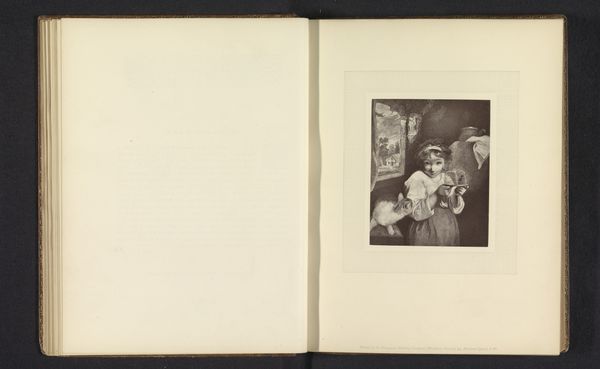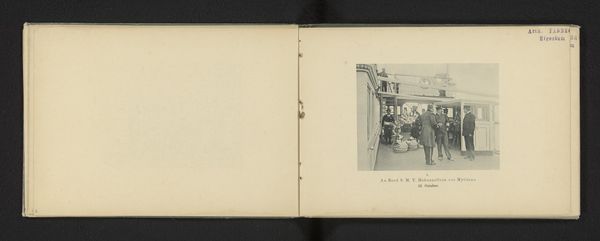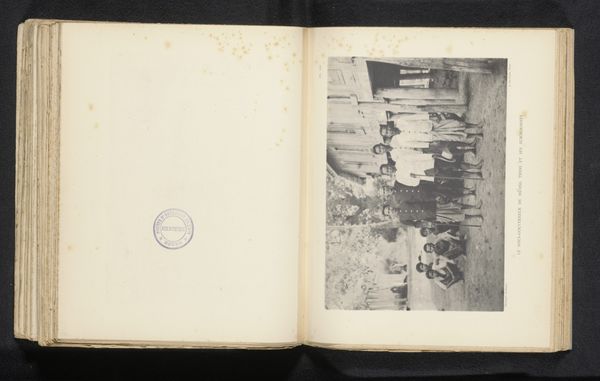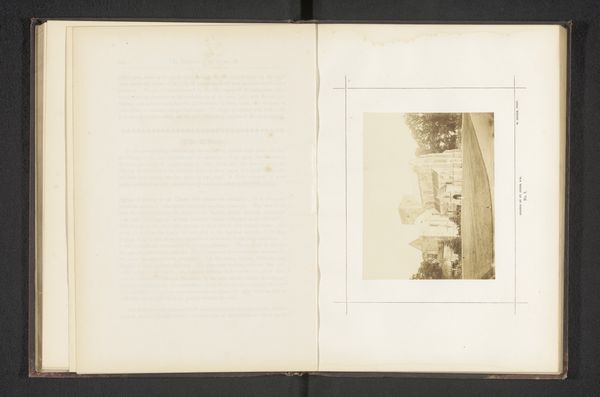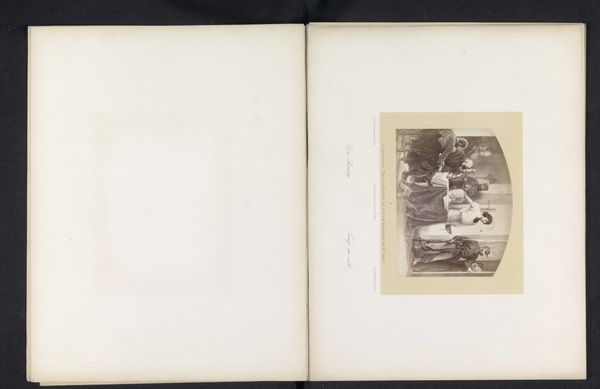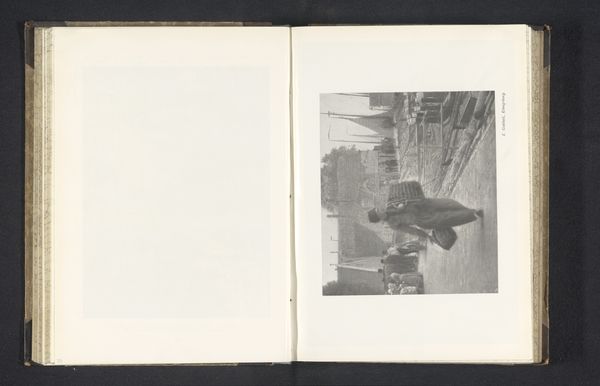
print, photography, photomontage, gelatin-silver-print
#
portrait
# print
#
photography
#
photomontage
#
gelatin-silver-print
#
genre-painting
#
modernism
#
realism
Dimensions: height 79 mm, width 153 mm
Copyright: Rijks Museum: Open Domain
Curator: Immediately, the photographic texture is striking. The tonality feels deliberately constructed to evoke a sense of intimacy and staged performance. Editor: This is a fascinating stereoscopic print, “Stereofoto van een onbekend gezelschap in huis” (Stereoscopic Photograph of an Unknown Company in a House), attributed to Jul. Hoffmann and dated before 1890. It’s a gelatin-silver print; quite a departure from earlier photographic processes in its rendering of light and detail. I’m interested in the print’s relationship to its probable function, its method of presentation within what looks like an album. Curator: Precisely, its material presence invites close looking and hints at specific forms of viewership. Considering it's a photomontage too, we could ponder on the layered practices evident in its making. I notice the use of artificial light, signaled by the interior text. What was the intended function of these photographic recreations of reality for a 19th-century viewer? Editor: Well, I see that artificial lighting allowing the interior space itself to become the stage. And this staginess invites questions about realism versus idealization within the genre scene itself. The group—what are they reading, performing, or receiving? This photograph gives us an insight into leisure, consumerism, and perhaps emergent domestic theatre. It represents this as photographic practice enabled greater access to cultural participation and documentation of everyday life, specifically among certain social strata who enjoyed the benefits. Curator: I'd argue we should consider the socio-technical framework that allowed such interior scenes. Examining gelatin-silver production, for example, prompts inquiry on labor and standardization. Editor: Fair point. The very formal arrangement though suggests symbolic depth. Their composition, arranged tableau style within their social sphere speaks volumes about 19th-century values, taste, or a carefully mediated performance of selfhood and its gender dynamics. Curator: Indeed. Its commodification underscores broader societal values and class distinctions. Understanding the photographic practices—how the material conditions shape cultural and artistic outputs, lets the medium, in this case the image, speak its process and production within its cultural frame. Editor: Ultimately, I’m captivated by the emotional weight of the image and that careful arrangement. There’s something inherently captivating within its composition as a portal into lost moments. Curator: For me, it’s about unveiling production, that material dialogue offers crucial insight, connecting art objects to labor dynamics that made these objects accessible. Editor: Thank you.
Comments
No comments
Be the first to comment and join the conversation on the ultimate creative platform.

